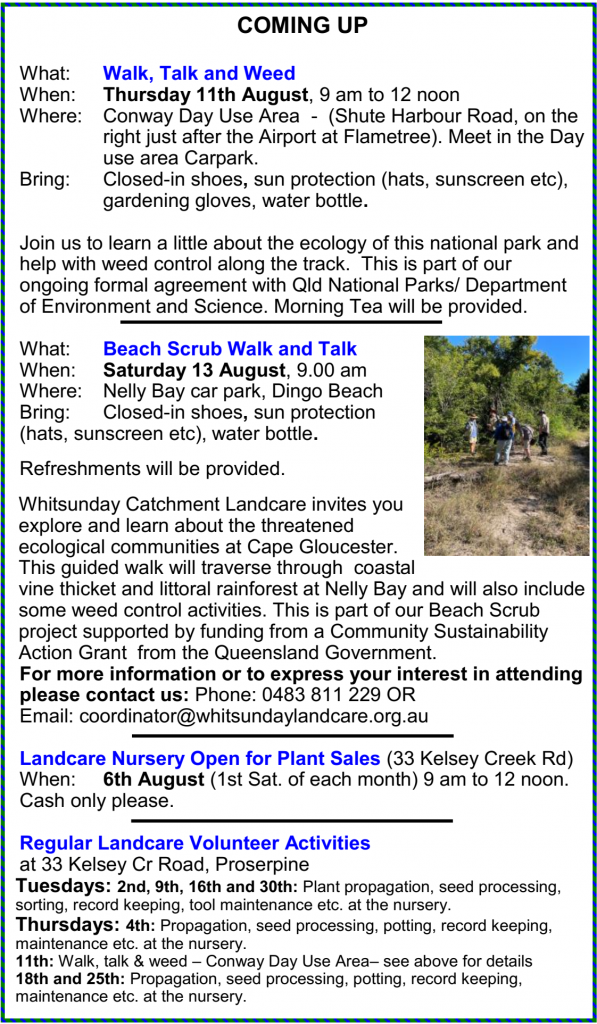Jul & Aug 2022 Whitsunday Conservation Council Inc
In this Edition click on the > toggle headline to read more
Eco Issue? Who ya gonna Call?
The climate is changing and we are in damage control – but are we in control?
Heat Waves – Flooding – Rubbish – Coral Bleaching – Land Clearing – No Bees to Pollinate – Fauna Extinction
So many exponential problems and so little time to turn our future around
You can make a difference – YOU CAN CALL US – and you can read about our PROJECTS and take action
Read more below
We live in paradise here but we may not have noticed that it could become paradise lost for the next generation.
Unlike the Ghostbusters, we don’t have a proton stream blaster. Just dedication and hard work.
It’s not just the broad issue of Climate Change but also the mindless stupidity of rubbish and waste, tree removal and everything you can think of, at a local level, to make our environment hotter – such as no shade, black heat-absorbing roads, excessive CO2 making cement for concrete, reckless use of herbicides and destruction of our native flora and fauna. Bad building designs waste electricity on heating and cooling. Our electric vehicle take up lags behind other first world countries.
We have a relentless battle with bureaucracy and the fossil fuel lobby, who with support from the dominant media platform, control some of our politicians.
Please use the form at the foot of this page to let us know how we can help with an ecological or environmental problem. Our team have the right contacts and can initiate projects to tackle awareness and take action.
- Tell us what you want from us
- You can write a blog – ask us to show you how
- Better still, join our team and help us save this Whitsunday paradise.
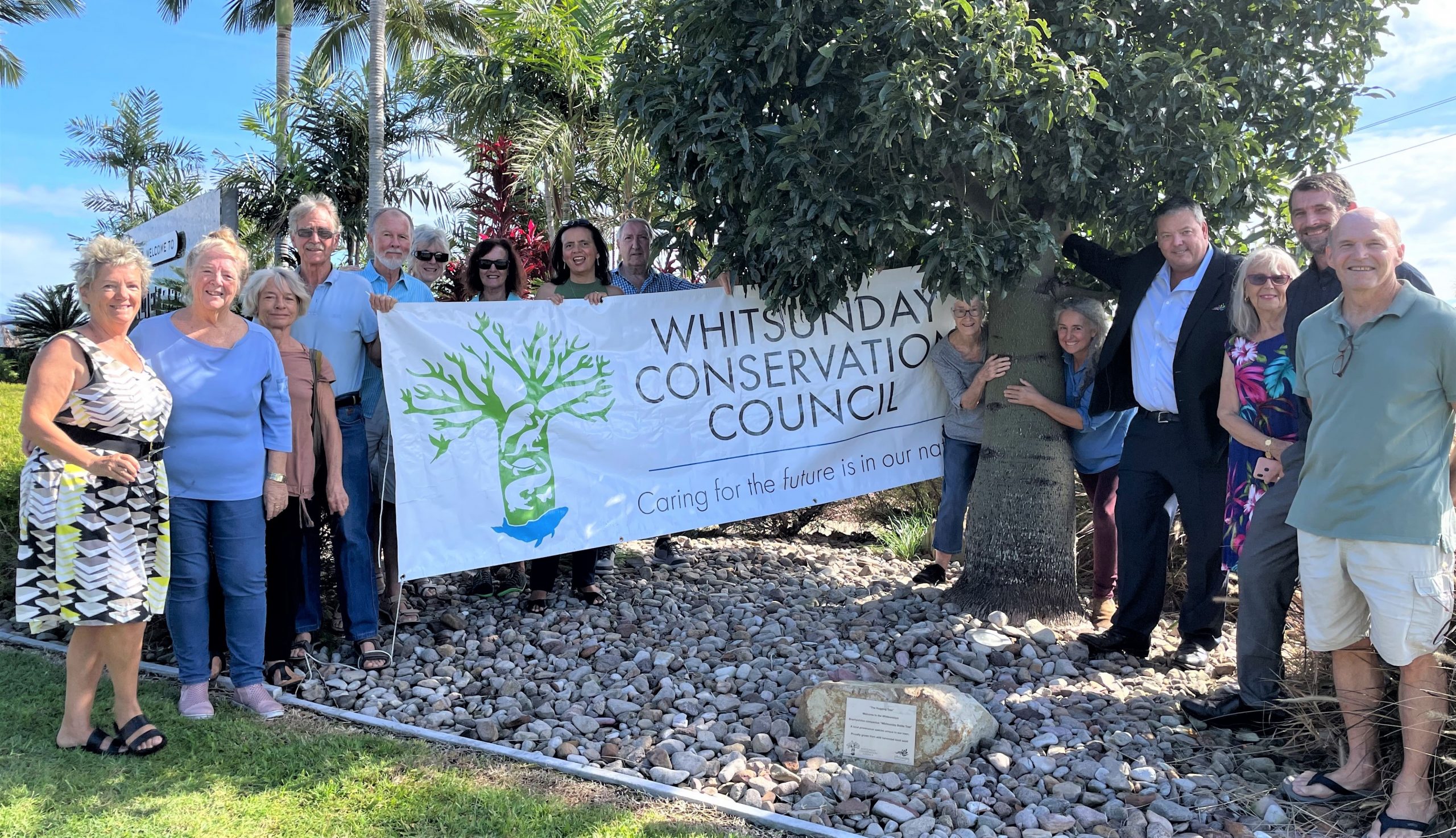
Turnout has recovered from the Covid Years. The weather was perfect and everyone had a great time at both the Night Markets (Friday Aug 5) and for the Parade (Saturday Aug 6).
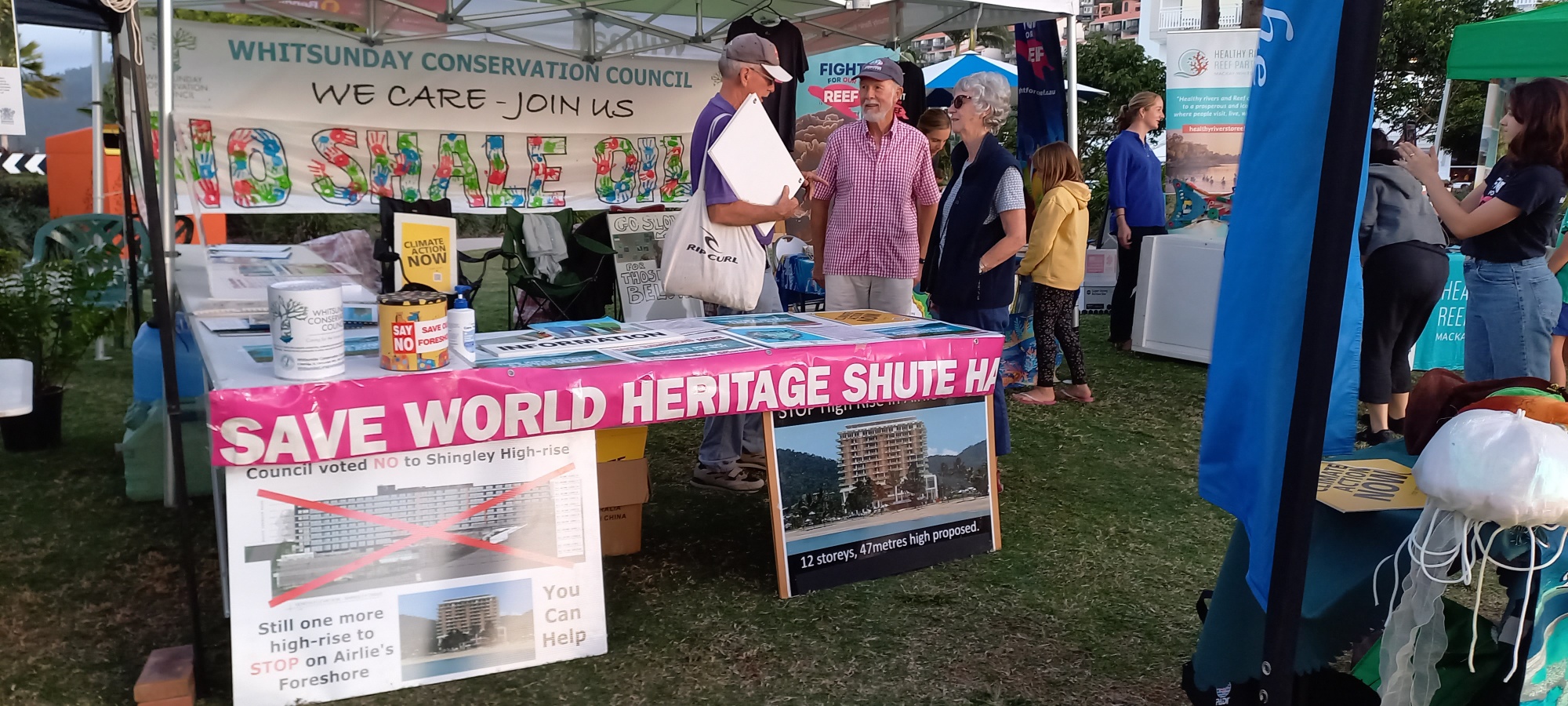 The Friday Night Markets included Nature Celebration Whitsundays, bringing together environmentally-minded people and groups to celebrate their work and passion. This year, Nature Celebration included EcoBarge/Coast and Clean Seas, Great Barrier Reef Marine Park Authority, Healthy Rivers to Reef Partnership, OUCH Volunteers, Whitsunday Conservation Council, Whitsunday Climate Innovation Hub, Australian Marine Conservation Society, Whitsunday Fauna Rescue, Save Our Foreshore, Queensland Parks and Wildlife Service and Whitsunday Catchment Landcare. The evening was dominated by a keen public and lots of networking between the groups.
The Friday Night Markets included Nature Celebration Whitsundays, bringing together environmentally-minded people and groups to celebrate their work and passion. This year, Nature Celebration included EcoBarge/Coast and Clean Seas, Great Barrier Reef Marine Park Authority, Healthy Rivers to Reef Partnership, OUCH Volunteers, Whitsunday Conservation Council, Whitsunday Climate Innovation Hub, Australian Marine Conservation Society, Whitsunday Fauna Rescue, Save Our Foreshore, Queensland Parks and Wildlife Service and Whitsunday Catchment Landcare. The evening was dominated by a keen public and lots of networking between the groups.
Night Markets organiser Tony Fontes did a great job and shouted us all a stack of pizzas, high enough to almost need a planning permit!
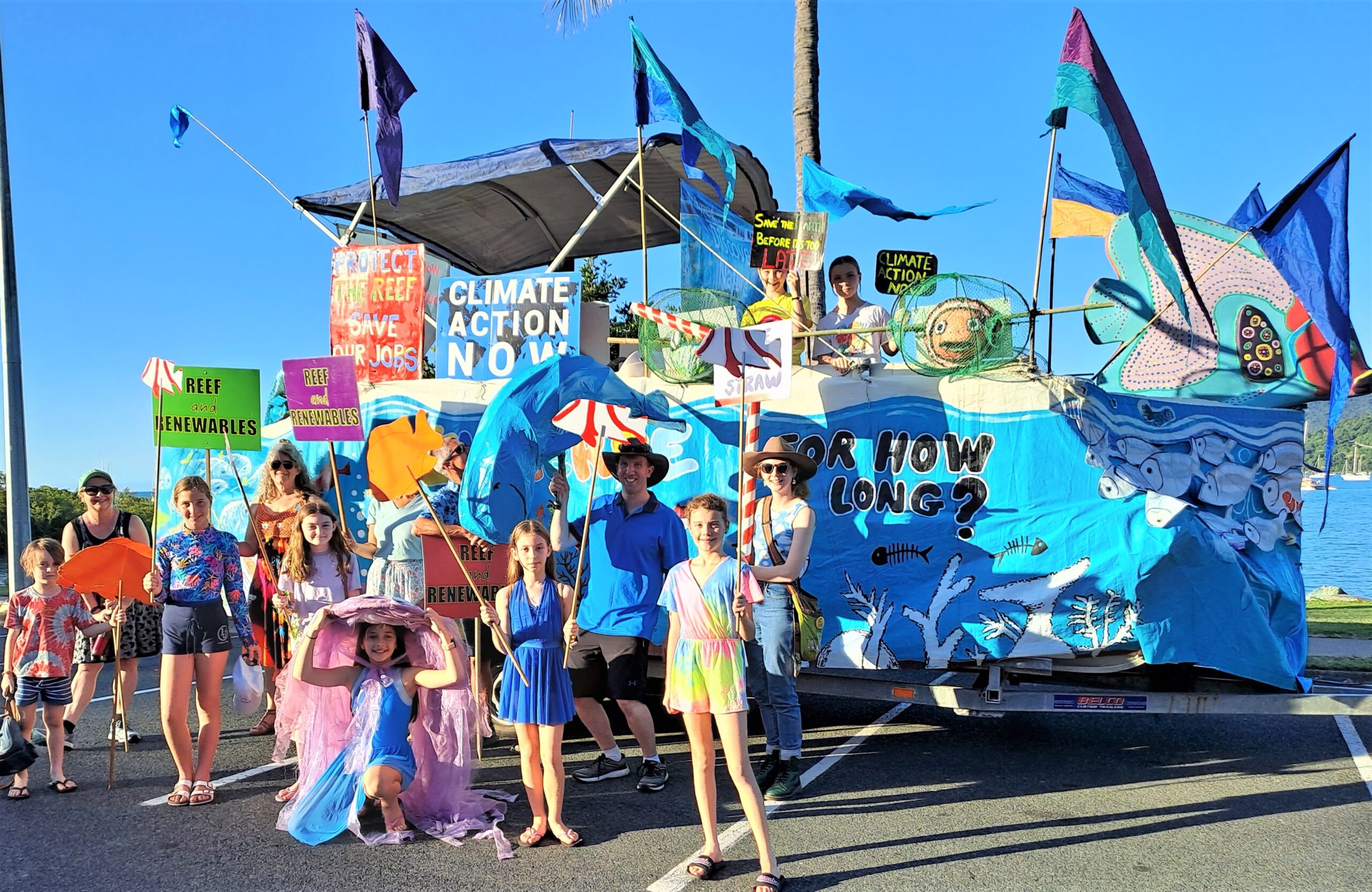
Although mainly for the smaller humans, who really seem to enjoy it, the Parade reinforces the excellent work done by the charities who take part. If you couldn’t make it this year, you really should try next year. Take pride in what we do as individuals and collectively.
Special thanks go to those who put in so much hard work to create the float, which was organised by Jonathan Peter and some great creations from Jo Pillifeant.
Our whole is greater than the sum of our parts (adapted from Aristotle’ quote)
 The Whitsunday Regional Council (WRC) has set up a Public Consultation on amendments to the Whitsunday Planning Scheme 2017 and associated reports on Council’s Yoursay website. To access Yoursay, a registration process must be completed. If you do not want to register, we have set up a submission page which is detailed below.
The Whitsunday Regional Council (WRC) has set up a Public Consultation on amendments to the Whitsunday Planning Scheme 2017 and associated reports on Council’s Yoursay website. To access Yoursay, a registration process must be completed. If you do not want to register, we have set up a submission page which is detailed below.
This is an opportunity to reinforce the need for clearly defined limits on building heights, even if the WRC continues to ignore them. If the council ignores the Planning Scheme, it gives us the right to challenge inappropriate development. If we do nothing, then the Planning Scheme lacks the authority to hold the WRC accountable.
We consider building heights in certain key areas to be of environmental significance that affects our quality of life and enjoyment of surrounding areas, such as greenspace and views from neighbouring properties. Information has been supplied by Fight for Airlie and we have created a submission form to help people make their concerns heard.
 Make a submission here Submissions close at 5pm on Friday 16th September 2022
Make a submission here Submissions close at 5pm on Friday 16th September 2022
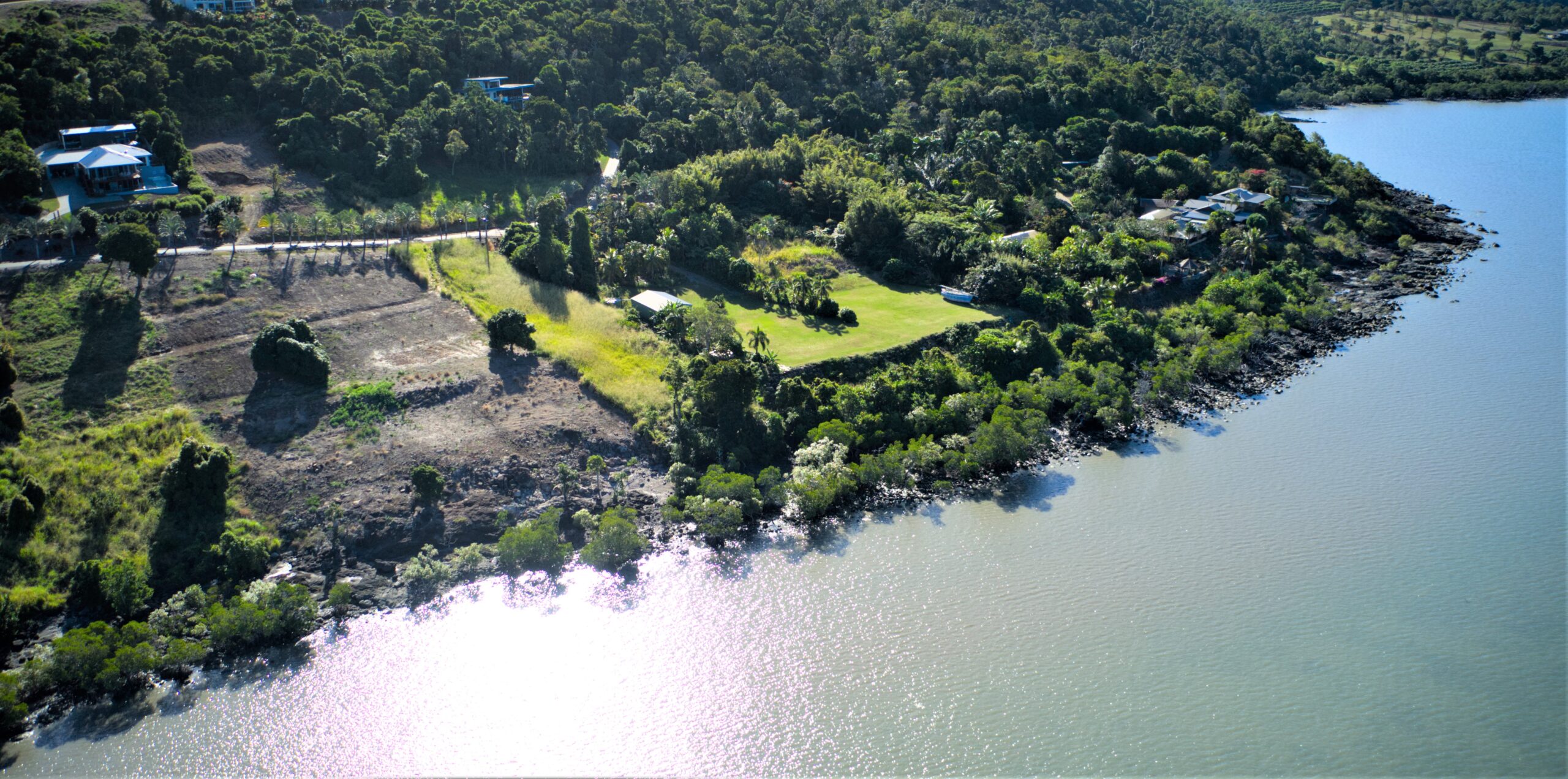 Community members from MANGROVE WATCH and WCC have been concerned about a patch of mangroves on the western side of Pioneer Bay, below a development site that has clearly been denuded of most vegetation.
Community members from MANGROVE WATCH and WCC have been concerned about a patch of mangroves on the western side of Pioneer Bay, below a development site that has clearly been denuded of most vegetation.
QLD Department of Fisheries (which looks after mangroves – as this is where most fish stocks originate) and Council were contacted in March 2019. As was world renowned mangrove expert Norm Duke for his opinion. Reponses were as follows:
Council action – Council representative and State authority went to have a look and the conclusion was that it was all one species that had died of heat stress, possibly in the November heat wave.
Dr Norm Duke, who is a marine biologist with extensive experience on ecological research in tropical coastal ecosystems, particularly for mangrove forests of Australia and Central America, said “Mangroves do not die normally from heat stress. It is essential to look further. Especially in your area. In your region, it is clear there has been multiple instances of herbicide damage from runoff in many local estuarine systems from Mackay north including the Proserpine river. The indicator is dead Avicennia trees while other species immediately adjacent are looking fine.”
Mangrove Watch is concerned that appropriate action has not been taken, the mangroves are deteriorating by comparison with the surrounding mangroves. More to follow, as your WCC investigates.
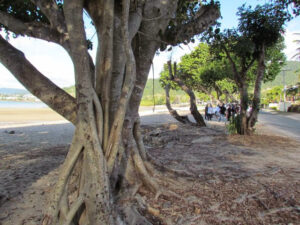
It’s the human condition – we want something and we destroy to get it
We do not think about the consequences
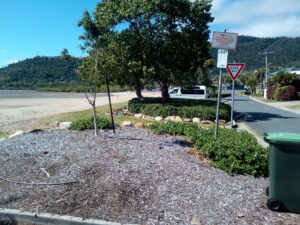
 We’re lazy and want to park right next to our destination. The vegetation is removed and council lays out the bitumen – at great cost to the ratepayers. So council want financial help and parking meters are installed. The bitumen and lack of shade contribute to a hotter environment. The birds and the insects that survived in the area die, if they can’t find alternative homes.
We’re lazy and want to park right next to our destination. The vegetation is removed and council lays out the bitumen – at great cost to the ratepayers. So council want financial help and parking meters are installed. The bitumen and lack of shade contribute to a hotter environment. The birds and the insects that survived in the area die, if they can’t find alternative homes.
A recent episode in Coral Esplanade, Cannonvale, illustrates this point. Your WCC has managed to get the council to revegetate an area that was rezoned for parking, that would have cost an estimated $150,000 for just five cars on a handful of days in the summer. Yes, a crazy waste of our money that would have breached the original agreement with concerned ratepayers in 2011.
The area was originally vegetated but not watered, so it died out, giving the council an excuse to rip it up. A stay of execution has been obtained. The new plantout is basic, without a replacement of the second tree that was there. It should have seating so that people can use it for recreation. And yes, the watering system needs to be turned on whilst the new plants settle in.
There is plenty of parking a little further away with grassed areas to take any overflow on a handful of busy days each year.
If we continue to replace vegetated areas with concrete, we lose all the benefits of shade and cool areas to enjoy our tropical paradise.
So next time you want to have fun in an area where parking may be limited or not exactly where you want it, ask yourself if you can:
- Walk
- Cycle or Scooter
- Get a lift
- Drop off your gear and park nearby in a shady spot
Think how much better it will be for your health and our environment
 They account for billions of dollars in electricity around the world and therefore contribute to CO2 pollution. You will find them staring at you from almost any electric device or appliance, such as:
They account for billions of dollars in electricity around the world and therefore contribute to CO2 pollution. You will find them staring at you from almost any electric device or appliance, such as:
- Desktop computers
- TVs
- Digital personal assistant (Echo, Alexa, Google Now, etc.)
- DVD players and DVRs
- Cell phone chargers (and any other battery chargers)
- Video game consoles
- Clock radios
- Computers and printers
- Coffeemakers
- Power strips
- Microwave ovens
- Any device with a remote control
- Any device with a clock
- Programmable devices
- Devices with a power light or standby indicator light
Garlic won’t work but turning off standby mode on non-essential devices is a good deterent. Not only will you save money but you will help to save the planet. You may even stop them spying on you.
To ward off these energy sucking vampires, use energy-saving modes, plug cords into power strips that can be turned off and, whenever possible, unplug appliances when not in use.
When staff stop work for the day and head home, these vampires start their shift.
Just imagine the amount of electricity generated by all those devices on your desk and about your office. Then multiply that by the number of offices in your building, then the number of buildings, then the number of business centres in the world. The amount of electricity is big enough to power a small country for the following day.
If we could reduce the power drained by these vampires overnight, it would significantly reduce the need for power generation at night – the time when we currently turn to fossil fuels.
Forget the wooden stake but don’t forget how you can be a real energy vampire slayer by using low energy components and turning off the lights in empty rooms.
Helium balloons are so pretty and make special occasions more memorable – for us that is – but not for other creatures or the environment. Released balloons always come back to Earth as litter.
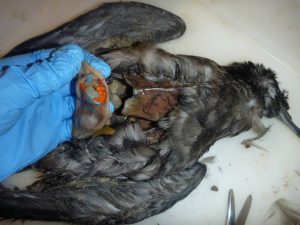 When mistaken as food, balloons can slowly kill wildlife through digestive blockage, strangulation and choking. Affected wildlife includes marine animals such as shearwaters and turtles, as well as freshwater animals such as platypus. Farm animals can also be affected.
When mistaken as food, balloons can slowly kill wildlife through digestive blockage, strangulation and choking. Affected wildlife includes marine animals such as shearwaters and turtles, as well as freshwater animals such as platypus. Farm animals can also be affected.
See the impacts on Wildlife and the Environment HERE 
Many marine wildlife research scientists support a ban on the release of balloons, as do organisations involved with litter and marine protection, such as Boomerang Alliance, Ecobarge Cleanseas, Tangaroa Blue, Lord Howe Island Museum, Sapphire Coast Marine Discovery Centre and the Australian Platypus Conservancy.
Marine Plastic Pollution is increased with balloon releases
Balloons are no longer made from natural latex but a synthetic. While the industry claims balloons biodegrade, this can take many months or years, all the while posing a threat to wildlife. Non-biodegradable attached streamers and disks add to the litter and threat. Mylar balloons do not biodegrade; they can cause power outages and spark fires.
Cleanup crews here in the Whitsundays and throughout the world are well aware of the increasing prevalence of balloons, either whole, burst or remnant, many with attached streamers and disks.
Helium is a scarce, non-renewable gas, vital to important scientific, medical and industrial uses and should not be wasted on activities such as releasing balloons for commemorative or celebratory reasons, or for promotional reasons.
Inhaling helium has caused many human deaths. Helium balloons, especially large bunches, are also a potential threat to aircraft.
Helium balloons can travel long distances, across council and state borders, creating litter hundreds of kilometres from the release site, hence a unified approach across the nation is required.
Banning the release of balloons will aid Waste Reduction Targets
Agencies already spend a great deal of time and effort attempting to educate people about the environmental impacts of released balloons. Despite this and a variety of anti-litter and anti-balloon release laws across Australia, releases still occur.
The use of helium enables the accidental release of balloons. With easy access to helium and helium balloons now ubiquitous at events and festivals, this is all too common. Just one released balloon will result in litter and pose a threat to wildlife.
Alternatives to balloon releases include reusable banners, flags, ribbon dancers, or pinwheels. For memorials and fundraisers: plant trees or gardens, actions that promote life.
There is a global movement against the release of balloons due to their environmental impact (read more at BalloonsBlow.org). Australia could lead the way and be the first to nationally ban helium balloons.
A solution would be for the Federal Government to unite the States and Territories of Australia for a national ban on the release of balloons and the use of helium to inflate balloons for non-scientific uses.
 A start has been made as sky lanterns are already banned nationally. BOM are working on changing their weather balloons to make them less of a problem, as they release over 50 a week that end up in the ocean. Some states have already passed legislation imposing bans on balloons but in the end it is up us to make a start and stop buying helium filled balloons.
A start has been made as sky lanterns are already banned nationally. BOM are working on changing their weather balloons to make them less of a problem, as they release over 50 a week that end up in the ocean. Some states have already passed legislation imposing bans on balloons but in the end it is up us to make a start and stop buying helium filled balloons.
 Several campaigns have been run and you can Join a Campaign here
Several campaigns have been run and you can Join a Campaign here
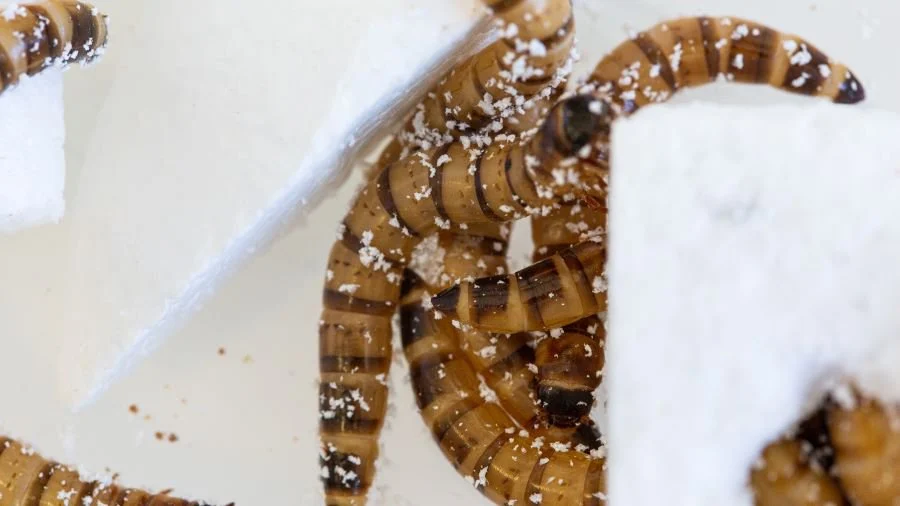 Margaret Osborne wrote about these amazing creatures in the Smithsonian Magazine in June 2022.
Margaret Osborne wrote about these amazing creatures in the Smithsonian Magazine in June 2022.
Researchers in Australia have identified enzymes in the gut of certain beetle larvae that can degrade plastic. In a study published in Microbial Genomics, they write that these “superworms,” of the species Zophobas morio, could help reduce plastic waste in the future.
“Superworms are like mini recycling plants, shredding the polystyrene with their mouths and then feeding it to the bacteria in their gut,” Chris Rinke from the University of Queensland in Australia said in a statement. “The breakdown products from this reaction can then be used by other microbes to create high-value compounds such as bioplastics.”
In the study, scientists split beetle larvae into three groups, feeding one group wheat bran, one polystyrene and one nothing. Over three weeks, they monitored their growth.
“We found the superworms fed a diet of just polystyrene not only survived, but even had marginal weight gains,” Rinke said in the statement. “This suggests the worms can derive energy from the polystyrene, most likely with the help of their gut microbes.”
On the other hand, the plastic-fed worms gained much less weight and were overall much less healthy than the bran-fed ones, though better off than the starvation group. After three weeks, some larvae were also set aside to grow into beetles, per the study. About 93 percent of the bran-fed larvae formed pupae, while about 67 percent of the polystyrene-fed larvae and 10 percent of the starved larvae pupated.
Polystyrene is one of the most common plastics used today, appearing as packing peanuts, packaging, as CDs and DVDs, among a multitude of other applications. It’s made up of up a series of linked, repeating chemical units called styrenes. Polystyrene is not very chemically reactive, and breaking it down with industrial recycling methods that break polystyrene down to its styrene components takes high heat (upwards of 400 degrees Fahrenheit). So, researchers have been looking for plastic-degrading enzymes and organisms for years.
Further research will still need to be done to figure out how to optimize these worms, bacteria and enzymes to use in recycling facilities.
“It is still too early to make any predictions about when a bioprocess for polystyrene recycling will be available,” Ren Wei at the University of Greifswald, Germany, tells New Scientist. “It will take time to isolate and characterize these enzymes… and then engineer them to meet the stringent requirements for developing a bio-based recycling process.”
Local resident and WCC member Jo Pillifeant has tried to get the Whitsunday Regional Council involved in a project. These worms could be used for livestock feed or protein supplements.
However, some scientists say banning polystyrene altogether is a better solution. Instead, biodegradable material can be made from vegetable refuse.
 WCC would like to hear from people interested in setting up a pilot project. You can use the form below.
WCC would like to hear from people interested in setting up a pilot project. You can use the form below.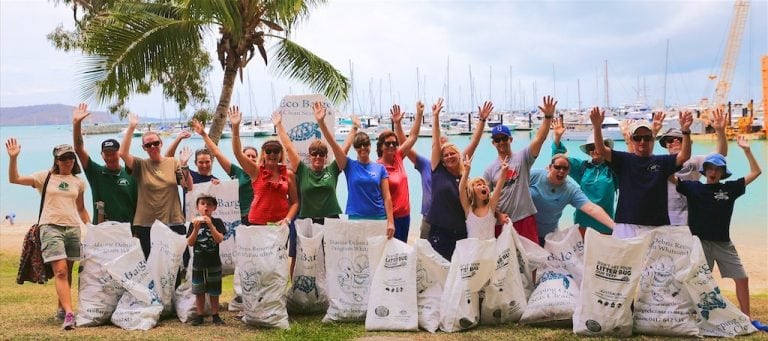 Apart from collecting plastic and other rubbish that we humans carelessly leave everywhere, there is a tremendous Camaraderie in Clean Up.
Apart from collecting plastic and other rubbish that we humans carelessly leave everywhere, there is a tremendous Camaraderie in Clean Up.
The two titans that we have to thank for removing thousands of tonnes of waste material are our local Eco Barge Clean Seas and Australia wide Tangaroa Blue Foundation. Both of these wonderful organisations are featured on our We Care page.
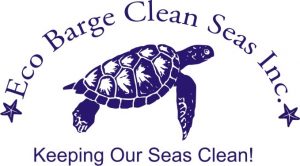 Please check these logo links now for news and clean up dates in your area
Please check these logo links now for news and clean up dates in your area 
 If you are like most people, you probably put renewal notices in the “do later” folder and hope that it takes care of itself.
If you are like most people, you probably put renewal notices in the “do later” folder and hope that it takes care of itself.
The subscription is either too much so you decide not to renew, or too little so you feel you can’t be bothered and that it won’t make any difference anyway.
Have a look at our Treetops webpage and go to the bottom of the list to find Charlie Pickering takes on Alan (cash for comments) Jones over his famous “grain of rice” Australia is too small to make a difference on climate change.
Each subscription to WCC is like that grain of rice, not just in monetary terms but in terms of building an effective force that will get your voice heard by governments at all levels. We ask only for a $1 but having you as a member makes us a million dollar force for environmental awareness.
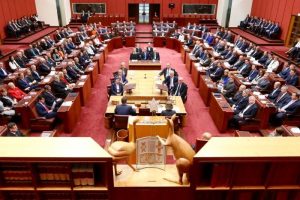 But there is more to it. The federal government makes it hard for charitable environmental organisations to exist in Australia. We are bogged down in red tape and membership numbers is one of them.
But there is more to it. The federal government makes it hard for charitable environmental organisations to exist in Australia. We are bogged down in red tape and membership numbers is one of them.
So please, make your membership worth a million dollars and renew as soon as you get the renewal notice. Many thanks.
